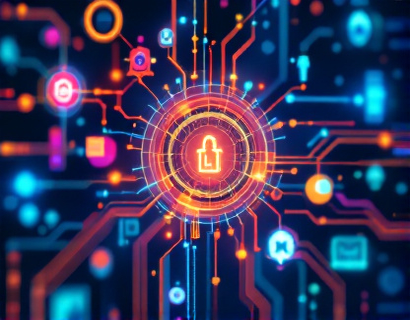Ethereum Layer 2: 2025 Insights - Mastering Scalability and Interoperability for Developers and Enthusiasts
As the decentralized finance (DeFi) and non-fungible token (NFT) sectors continue to surge, the demand for scalable and efficient blockchain solutions has never been more critical. Ethereum, the pioneering platform for smart contracts and decentralized applications (dApps), has been at the forefront of this evolution. In 2025, the focus shifts towards Layer 2 (L2) solutions, which aim to enhance scalability, reduce costs, and improve interoperability. This comprehensive guide delves into the latest developments in Ethereum's Layer 2 ecosystem, providing developers and enthusiasts with essential insights to navigate the dynamic and evolving landscape.
Layer 2 solutions are designed to address the inherent limitations of Layer 1 blockchains, such as Ethereum, by processing transactions off the main chain. These solutions offload a significant amount of computational work, thereby increasing transaction throughput and reducing gas fees. The primary L2 solutions for Ethereum include state channels, sidechains, and rollups, each with its unique approach and benefits.
State Channels
State channels, also known as payment channels, allow multiple transactions to occur off-chain between two parties. The final state of these transactions is then submitted to the main chain, significantly reducing the load on the network. This method is particularly effective for applications requiring frequent, small transactions, such as gaming and micropayments. The advantages of state channels include low transaction costs and near-instant settlement times. However, they require both parties to be online simultaneously, which can be a limitation in certain use cases.
One of the most notable implementations of state channels on Ethereum is the Lightning Network-inspired Ethereum Lightning Network (ELN). ELN enables users to conduct multiple transactions off-chain, with the final state being recorded on the Ethereum main chain. This approach not only reduces gas fees but also enhances the overall user experience by minimizing wait times for transaction confirmations.
Sidechains
Sidechains are independent blockchains that are linked to the Ethereum main chain through two-way pegs. These pegs allow assets to be transferred between the main chain and the sidechain, enabling greater flexibility and scalability. Sidechains can operate with different consensus mechanisms and customizable rules, making them suitable for various applications. For developers, sidechains offer the opportunity to experiment with new features and protocols without impacting the main chain's stability.
A prominent example of a sidechain project is Polygon (formerly Matic Network), which provides a scalable and cost-effective solution for Ethereum-based dApps. Polygon's L2 solutions, including its Optimistic Rollups and ZK Rollups, significantly enhance the network's throughput while maintaining security and interoperability. By leveraging sidechains, developers can build scalable applications that meet the demands of a growing user base.
Rollups
Rollups are one of the most promising Layer 2 solutions for Ethereum, offering high scalability and security. Rollups bundle multiple transactions into a single transaction on the main chain, reducing the computational load and lowering gas fees. There are two main types of rollups: Optimistic Rollups and ZK Rollups.
Optimistic Rollups assume that all transactions are valid and only challenge invalid transactions. This approach requires a grace period during which users can dispute the final state. If no disputes are raised, the transaction is confirmed. Optimistic Rollups, as implemented by Polygon, have already shown significant improvements in transaction throughput, processing thousands of transactions per second.
ZK Rollups, on the other hand, use zero-knowledge proofs to bundle and verify transactions off-chain. These proofs ensure that all transactions are valid without revealing the transaction data, providing a higher level of security and privacy. ZK Rollups, such as those developed by Arbitrum and Loopring, offer even greater scalability and faster confirmation times compared to Optimistic Rollups. However, they require more complex cryptographic techniques and higher computational resources.
Interoperability
Interoperability is a critical aspect of the Ethereum ecosystem, enabling seamless interaction between different blockchain networks. Layer 2 solutions play a pivotal role in enhancing interoperability by facilitating asset transfers and data sharing across chains. Cross-chain bridges and atomic swaps are key technologies driving this interoperability.
Cross-chain bridges allow assets to be transferred between Ethereum and other blockchains, such as Binance Smart Chain or Solana. These bridges can be centralized or decentralized, with decentralized bridges like Wormhole and Transpol providing trustless and secure asset transfers. By integrating cross-chain bridges with Layer 2 solutions, developers can build truly global dApps that leverage the strengths of multiple blockchain ecosystems.
Atomic swaps enable direct, trustless exchanges of assets between different blockchains without the need for intermediaries. This technology is particularly useful for Layer 2 solutions, as it allows users to seamlessly move assets between main chains and sidechains or other L2 networks. Projects like Cosmos and Polkadot are leading the way in cross-chain interoperability, and their integration with Ethereum's L2 solutions is set to revolutionize the decentralized finance space.
Future Developments and Challenges
The Ethereum Layer 2 ecosystem is rapidly evolving, with ongoing developments and innovations addressing current challenges. One of the primary challenges is achieving full scalability and ensuring the security of L2 solutions. As more users and developers adopt these solutions, the network must scale efficiently without compromising on security.
Another significant challenge is the complexity of implementing and integrating Layer 2 solutions. Developers need robust tools and frameworks to build scalable and interoperable dApps. Projects like Ethereum's Eth2 upgrade, which introduces sharding, aim to enhance the main chain's scalability, complementing the efforts of L2 solutions.
Looking ahead, the integration of Layer 2 solutions with emerging technologies such as Web3 and the Metaverse will be crucial. As decentralized applications become more sophisticated, the demand for high-performance, low-cost, and interoperable blockchain solutions will continue to grow. The Ethereum community, along with the broader blockchain ecosystem, is well-positioned to meet these demands and drive the next evolution of decentralized technologies.
In conclusion, Ethereum's Layer 2 solutions are transforming the blockchain landscape by addressing scalability, cost, and interoperability issues. State channels, sidechains, and rollups each offer unique benefits, and their combined use will pave the way for a more robust and user-friendly decentralized ecosystem. For developers and enthusiasts, staying informed about these advancements is essential to harness the full potential of Ethereum's next evolution.










































